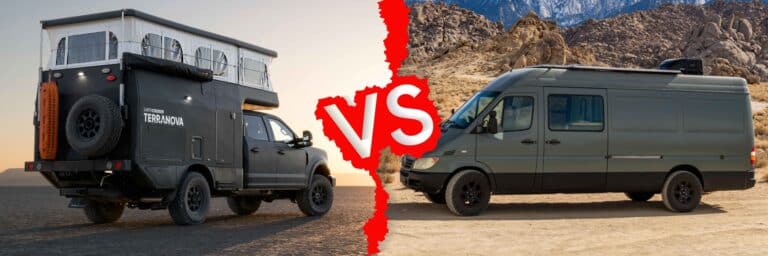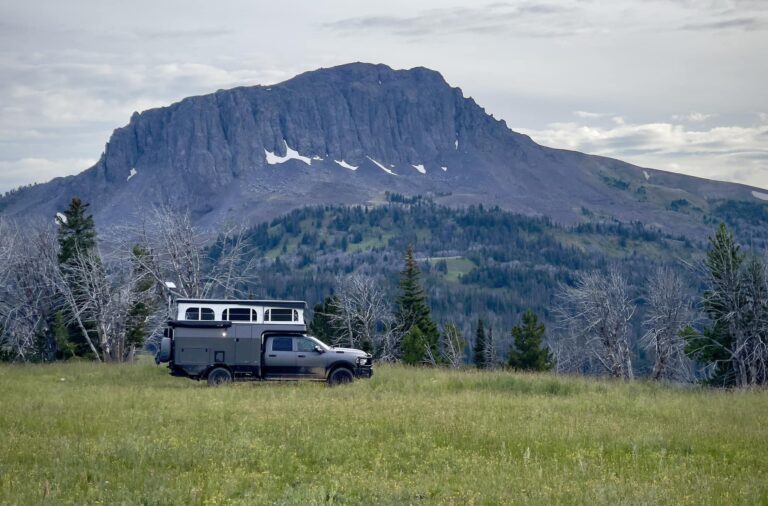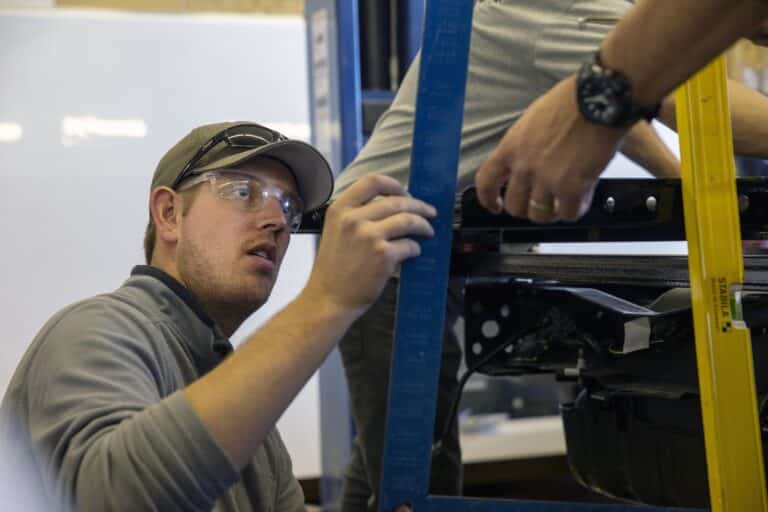When considering a chassis platform for overlanding, there are a number of key factors to consider that differ slightly from what may be important in a typical family car. The very nature of overlanding, from the frequent miles spent off the pavement to the desire to travel to remote destinations, means durability is criticial. This is one of the reasons we build our vehicles on body-on-frame over unibody chassis.
What is a body on frame chassis?
Body on frame chassis are constructed so that the body of the vehicle is mounted on a chassis that carries the powertrain. Most heavy-duty pickup trucks and larger SUVs are made in this style.
What is a unibody chassis?
A unibody chassis is when the vehicle’s body serves as the frame and support system for the overall weight of the vehicle. In other words, the frame and the body of the car are manufactured as one piece. There are no frame rails on unibody chassis. This is how the majority of modern family cars are constructed, as well as a very small number of smaller SUVs and many vans.
Why Body on Frame is our choice for overlanding
A chassis which is built as a support system alone, rather than one designed to combine that job with also being a frame, is simply stronger and more durable. Body on frame chassis can generally take more abuse and outlive their unibody counterparts. They can better tolerate torque and flexing, which means better handing off-road and less stress on the vehicle’s housing and living space components.
Body on Frame builds can also handle a bigger payload. Their solid steel construction means not only can they support better built living spaces and supplies, but more rugged components. Vehicle manufacturers and upfitters can fit heavy duty transmissions and transfer cases to the vehicle, increasing power and capability. Their solid construction also allows them greater towing capacity, meaning you can take your favorite off-road toys and boats along for the adventure.
Should a dent or ding occur, the body can be repaired or replaced without major overhauls to the entire vehicle, making such repairs quicker and less expensive.
There are a few drawbacks to this style of chassis. The added weight can impact fuel economy and they are less expensive for vehicle manufacturers to mass-produce. But we feel the benefits far outweigh these drawbacks, especially in off-road conditions where differences in fuel economy are minimized.
Enter the EarthCruiser Evado
While there’s no denying that the unibody vans currently on the market have allowed thousands of people to pursue their dreams of independent living and adventure travel, there are a growing number of people who’ve experienced the shortcomings of these platforms when they’re put to a serious test. This is why we have waited until a body on frame, all-wheel drive van chassis has been available in the United States to build a van-style vehicle, and we couldn’t be more excited. The Evado will meet the EarthCruiser standard of off-road excellence built on the familiar platforms of Ford Transit and Mercedes-Benz Sprinter body on frame chassis.
For more information on the new EarthCruiser Evado, contact us at sales@earthcruiser.com or (541) 706-9101










